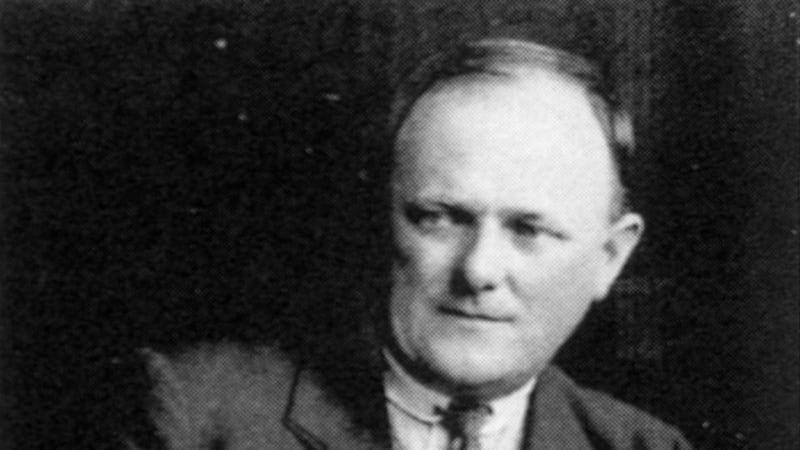On November 7th, 1915, Wexford defeated Kerry in the All-Ireland final. The previous evening Tim “Tadhg” Kennedy, a lieutenant in the Tralee corps of the Irish Volunteers, boarded the Dublin train having been put in charge of a group of fellow Volunteers ostensibly travelling as supporters to the match. The game provided them with perfect cover.
By now, plans were being formed to use the Irish Volunteers to launch an insurrection against British rule. In October, Patrick Pearse visited Tralee and informed Austin Stack, commander of the Kerry Volunteers, of the plans for revolt and shortly afterwards Stack arranged for the purchase of a large consignment of weapons from Dublin.
The morning after the final, Kennedy and his men drove to the home of Kerry native Michael O’Rahilly where the weapons would be handed over. They were loaded and driven to Kingsbridge station and smuggled aboard the returning supporters’ train to Tralee that evening.

Tim Kennedy’s experience of the Irish revolutionary period was certainly one of the most eventful. Born in Annascaul, west Kerry, in 1885, he moved to Tralee to work for Kerry County Council. He quickly became friends with Austin Stack who swore him into the local IRB.
He joined the Gaelic League, becoming secretary of its Tralee branch. His other love was Gaelic football and he became a county board representative and a noted referee.
When the Irish Volunteers were formed, local Gaelic League branches frequently acted as their nucleus. Kennedy was contacted by the Volunteers in Dublin and asked to form a corps in Tralee in late 1913. From then on he became actively involved in the politics of the era.
In 1916 Stack instructed him to lead the Dingle Volunteers during the planned rebellion on Easter Sunday. Kennedy and his men arrived in Tralee, only to discover that the national uprising had been called off.
After the failure of the Rising in Dublin, Kennedy helped reorganise the local Volunteers. Once they adopted their new name, the Irish Republican Army, and began reorganising for war in 1919, he served as the main intelligence officer for the Kerry IRA. His work in the county council had made him an obvious choice.
He had been a friend of Michael Collins since they met on holidays in 1913. Under Kennedy’s leadership, an intelligence network was constructed by the Kerry IRA which aped Collins’s own in Dublin, relying heavily on information supplied by sympathetic or disillusioned civil servants and RIC officers.
He used Tom Dillon, chief clerk in the Tralee General Post Office, to procure copies of the letters and telegrams being sent to local British forces. And Margaret Pendy, who was in charge of the Tralee telephone exchange, listened in on police and military calls and reported back to him.
Yet not everyone sympathised with the IRA’s cause. Violence directed against those believed to be spies or informers grew in intensity as the war dragged on and Kennedy was directly involved in this brutal campaign against perceived enemies.
Often this ruthless intelligence war exposed political fault lines within families and Kennedy was forced to consent to the killing of his first cousin, Constable Patrick Foley of the RIC, in April 1920 (see Conor Mulvagh’s article, page 9).
Foley had been stationed in Galway, but mysteriously returned to Tralee. Kennedy quickly became suspicious when he began asking questions about known IRA men and was frequently seen entering local RIC barracks. Shortly afterwards, Kennedy got an urgent message from RIC District Inspector, Bernard O’Connor, who was supplying him with information.
O’Connor handed him notebooks which Foley had delivered into the RIC station in Dingle. They contained the names of every IRA officer in the district. After Kennedy’s own name, Foley had drawn a large question mark, still unsure if his relation was connected with the republicans.
Reluctantly, Kennedy was eventually forced to acknowledge that Foley represented too grave a threat to the local IRA. His bullet-ridden corpse was found by the RIC several days later.
In August 1920, Tim’s brother Patrick was shot dead by two Black and Tans in Annascaul. Kennedy had by then transferred to Dublin to work directly under Collins.
One evening, as both returned to their lodgings, the house was surrounded by British troops. Collins led Kennedy down a corridor towards a bookcase and touched a spring which opened the bookcase to reveal a darkened room. Safely inside, moments later they heard the footsteps of soldiers entering and searching the house. They then waited in the cell-like room until both men judged the danger had passed.
From Collins, Kennedy learned the importance of deceiving the enemy by completely integrating himself with them. On his return to Kerry, he became especially friendly with Col Berkley, the head of the British military in Tralee.
When the truce came Kennedy was appointed local liaison officer for the IRA, charged with ensuring the stable handover from the local British garrison. When he was shown into the room of the barracks commander in Tralee the colonel exclaimed “Good Christ!” as he leapt up in shock, “I hand it to you people, you’re the last man in the world I’d suspect.”
Though Kennedy personally supported the Treaty, his loyalty to Austin Stack ensured he sided with the anti-Treaty side and during the Civil War he was captured by Free State forces on August 3rd, 1922. Later he served as a Sinn Féin director of elections. He was campaign manager for Stack’s final election bid in 1927, two years before his death, and worked with Kerry County Council until his retirement.
Dr Richard McElligott is an occasional lecturer in modern Irish history with the School of History and Archives, UCD. His first book, Forging a Kingdom, A History of the GAA in Kerry, 1884-1934, is being published by the Collins Press this autumn.






